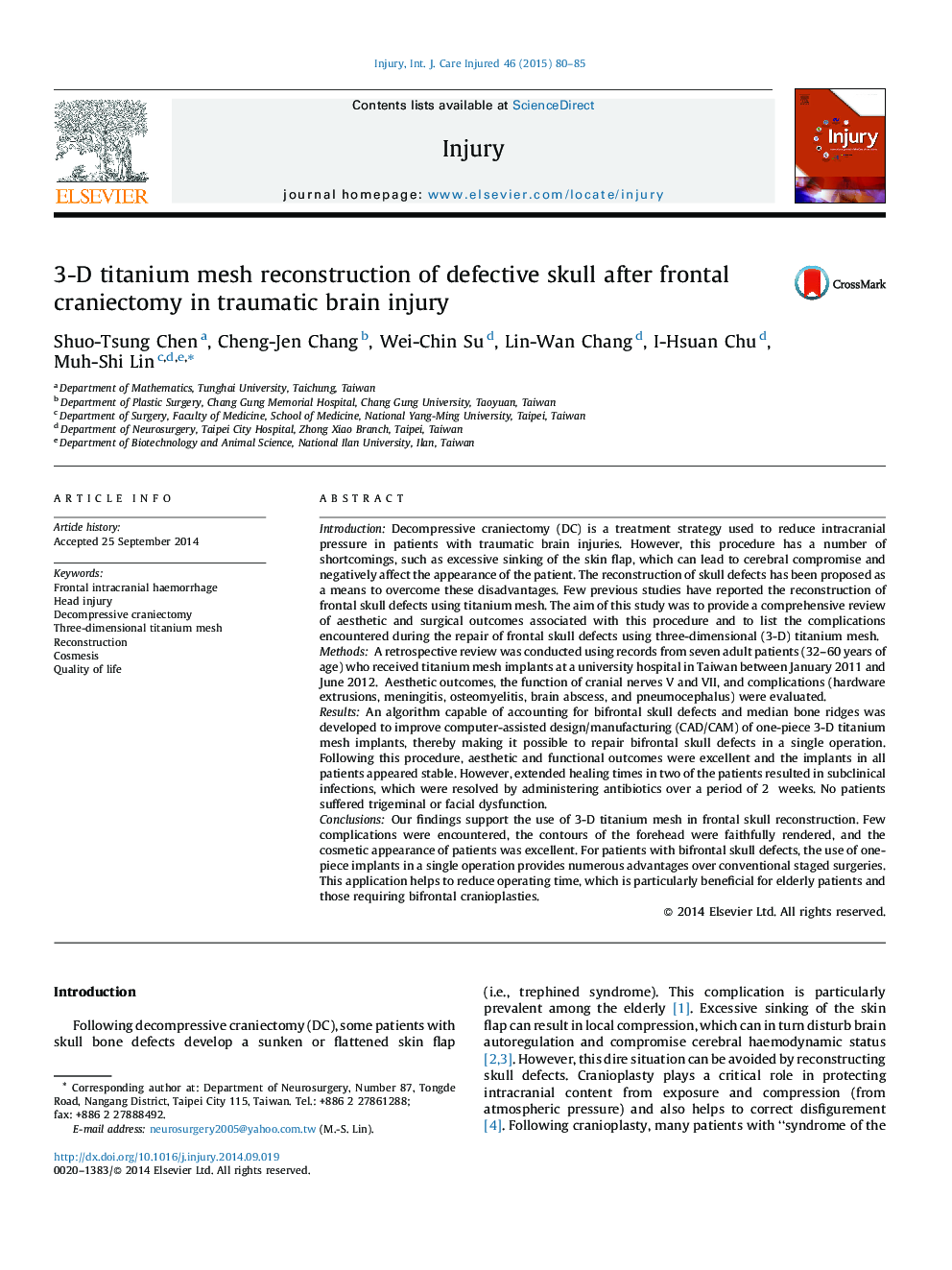| کد مقاله | کد نشریه | سال انتشار | مقاله انگلیسی | نسخه تمام متن |
|---|---|---|---|---|
| 3239175 | 1205986 | 2015 | 6 صفحه PDF | دانلود رایگان |
IntroductionDecompressive craniectomy (DC) is a treatment strategy used to reduce intracranial pressure in patients with traumatic brain injuries. However, this procedure has a number of shortcomings, such as excessive sinking of the skin flap, which can lead to cerebral compromise and negatively affect the appearance of the patient. The reconstruction of skull defects has been proposed as a means to overcome these disadvantages. Few previous studies have reported the reconstruction of frontal skull defects using titanium mesh. The aim of this study was to provide a comprehensive review of aesthetic and surgical outcomes associated with this procedure and to list the complications encountered during the repair of frontal skull defects using three-dimensional (3-D) titanium mesh.MethodsA retrospective review was conducted using records from seven adult patients (32–60 years of age) who received titanium mesh implants at a university hospital in Taiwan between January 2011 and June 2012. Aesthetic outcomes, the function of cranial nerves V and VII, and complications (hardware extrusions, meningitis, osteomyelitis, brain abscess, and pneumocephalus) were evaluated.ResultsAn algorithm capable of accounting for bifrontal skull defects and median bone ridges was developed to improve computer-assisted design/manufacturing (CAD/CAM) of one-piece 3-D titanium mesh implants, thereby making it possible to repair bifrontal skull defects in a single operation. Following this procedure, aesthetic and functional outcomes were excellent and the implants in all patients appeared stable. However, extended healing times in two of the patients resulted in subclinical infections, which were resolved by administering antibiotics over a period of 2 weeks. No patients suffered trigeminal or facial dysfunction.ConclusionsOur findings support the use of 3-D titanium mesh in frontal skull reconstruction. Few complications were encountered, the contours of the forehead were faithfully rendered, and the cosmetic appearance of patients was excellent. For patients with bifrontal skull defects, the use of one-piece implants in a single operation provides numerous advantages over conventional staged surgeries. This application helps to reduce operating time, which is particularly beneficial for elderly patients and those requiring bifrontal cranioplasties.
Journal: Injury - Volume 46, Issue 1, January 2015, Pages 80–85
